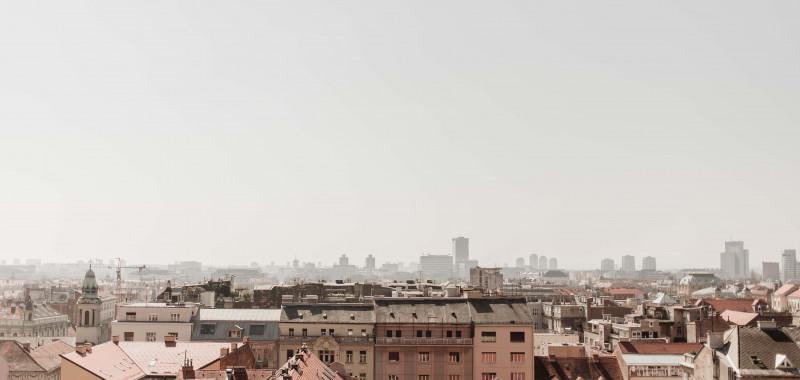
Zagreb’s Upper Town is known for its narrow streets, tourist attractions and hidden courtyards of buildings built in the 19th century. Right next to the world’s shortest funicular (66 m), in the Upper Town, is a residential building built in 1850 with an apartment on the first floor that uses an air-to-water heat pump.
The owner of the apartment, prof.dr.sc. Duić, after buying an apartment in the 1850’s building in the Zagreb’s city centre, started renovating it. The renovation included, amongst other measures, replacing the old gas stoves with a new and more efficient heating and cooling system. Given his profession and many years of experience in the field of efficient heating systems, he wanted to test the heat pump in his own home to examine in practice the advantages and disadvantages of such a system.
The air-to-water heat pump was installed in the prof.dr.sc. Duić’s home about ten years ago and is connected to three systems: underfloor heating in tiled rooms, ladder bathroom radiators and fan coil units in rooms where there is no underfloor heating due to parquet. Fan coil units are also used for cooling during the summer months, as well as controlling the room temperature.
In addition to installing a heat pump, old wooden windows were replaced with new ones, also made of wood, to match the style and period in which the building was built. The ceiling of the apartment was additionally insulated because it was previously tiled with wood boards. No other energy efficiency measures have been implemented, as the renovation of the façade is extremely expensive for a building within the cultural-historical zone. Regardless of that, the savings that resulted from the installation of the heat pump are very large, and according to the rough assessment of professor Duić, the investment has paid off in five years.
The outdoor unit of the heat pump is located on the facade of the building and is slightly larger than the outdoor air conditioning units. However, as the building is in the yard and not facing the street, no additional permits or permits from other co-owners of the building were required. Other tenants of the building initially complained about the noise, but after the noise measurements, it was determined that the noise level is within the legal limits and amounts to 30 dB. Apart from the initial disagreement of the building’s co-owners, prof.dr.sc. Duić points out that he did not encounter any major obstacles during the installation, because the installation company did an impeccable job, especially since this was also their first installation of a heat pump in the 19th -century building.
Despite the fact that prof.dr.sc. Duić is extremely satisfied with this efficient heating and cooling system, due to lower bills and higher comfort, he believes this is not a desirable practice in densely populated urban areas and/or the city centre. For such areas, a better option would be the connection to the district heating system, and he hopes and advocates that the option of connecting to the district heating plant in the centre of Zagreb will be possible soon.
| New heating system in use | Air-to-water heat pump |
| Previous replaced heating system | Natural gas stoves |
| Building type | Apartment building from 1850 in the Zagreb’s city centre, within the culturalhistorical zone |
| Installed capacity (kWth) – Before and after | Old system: ca. 24 kW New system: 11 kW, which he now considers to be oversized, but during installation they did not want to install a system of smaller capacity due to the age of the building and the lower energy class. |
| Used energy – before and after, kWh | Before: unknown Now: ca. 100 kWh per month electric energy |
| Initial investment (purchase and installation) | Before: unknown Now: ca. 100 kWh per month electric energy |
| Yearly savings on the energy bill (compared to previous system) | ca. HRK 4,000 (EUR 530) |
This best practice is issued from the activities of Work Package 4 “Preparation of instruments for replacement campaigns” of the REPLACE project. Read it now to discover many more best practices illustrating the benefits of innovative low-carbon and renewable heating and cooling systems.
Details
- Publication date
- 8 May 2023
